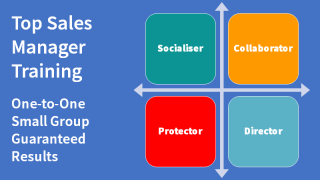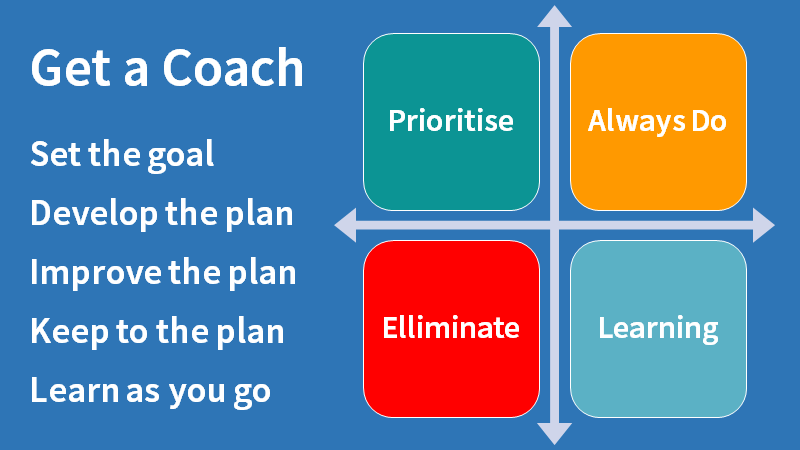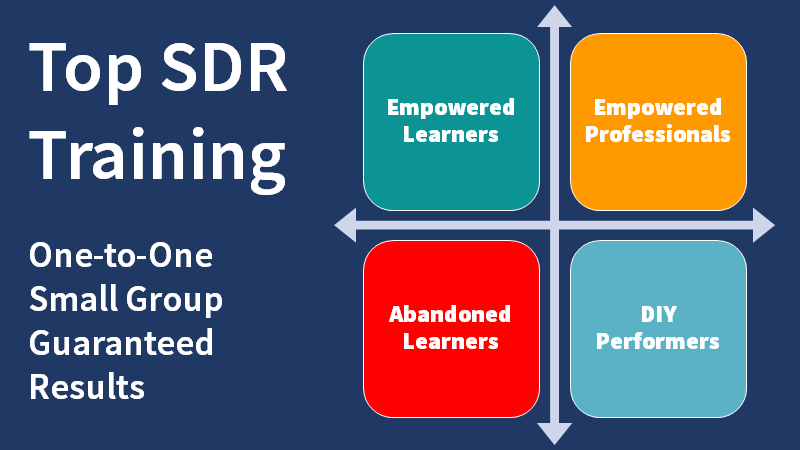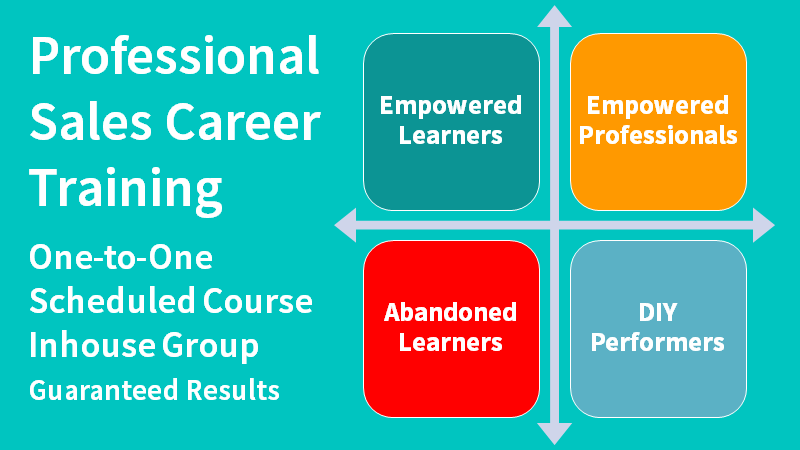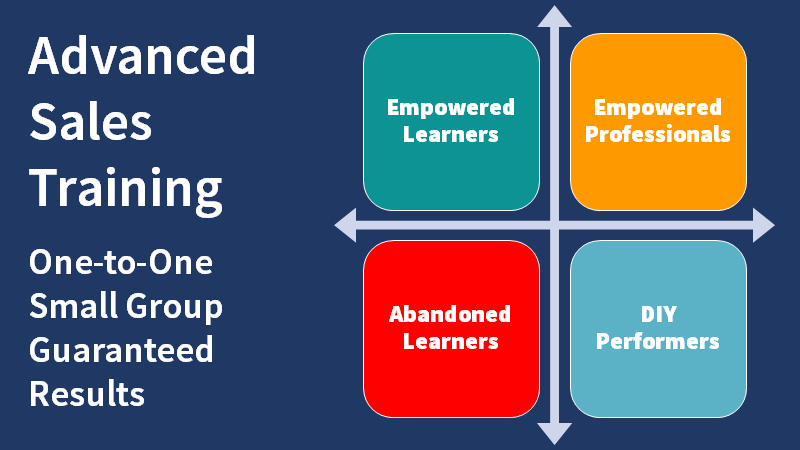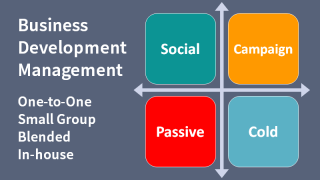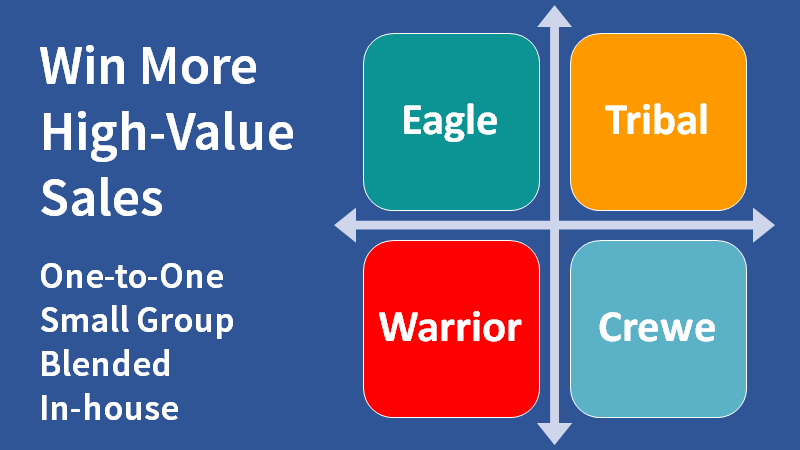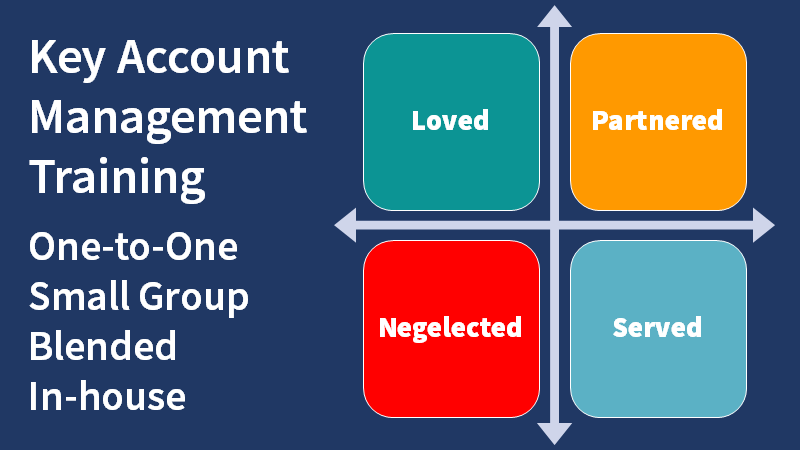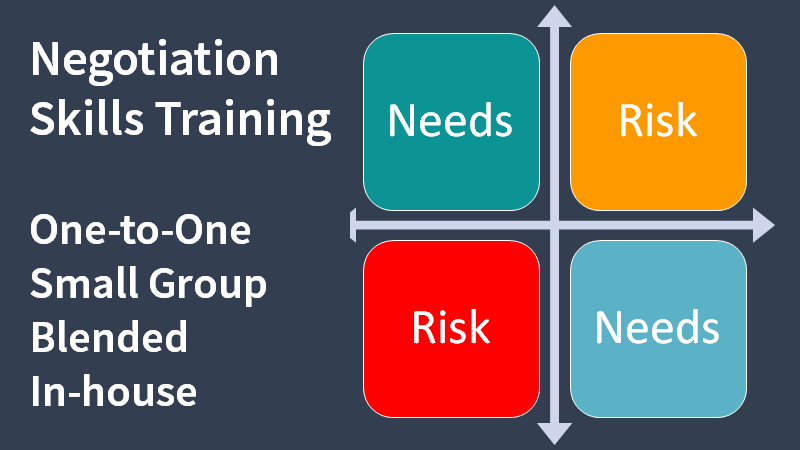Avoid performance crises by maintaining a sales performance improvement plan.
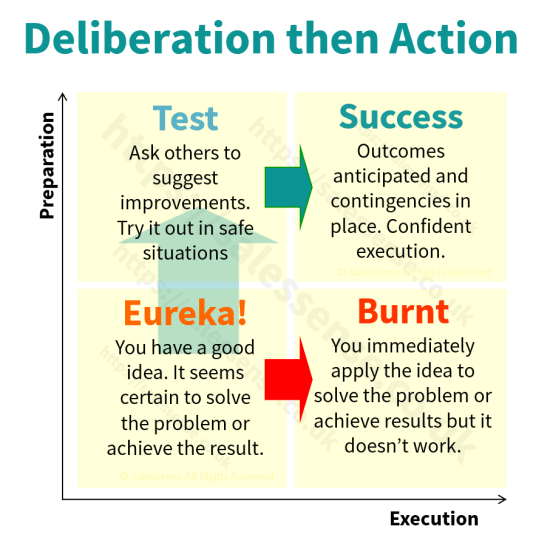
When sales fall behind target, a sales performance improvement plan becomes imperative. Don't wait until you need one.
No matter how good your offering, sales pipeline, and capabilities, sooner or later circumstances will conspire against you and sales will fall behind.
If you ensure that every salesperson, territory, and key account has a current, credible sales target achievement plan that includes contingencies, you will be ready to respond when things go awry.
With a performance improvement plan for sales in place, sales performance management becomes routine. Regular review of key performance indicators together with each salesperson's target achievement plan, creates opportunities to correct divergence early. It is so much easier to get things back on track when managers and salespeople take early remedial action.
Forethought, planning, and preparation precede success.
Request a free copy of our sales performance improvement template.
What is a sales performance improvement plan?
A sales improvement plan details how to recover from a sales shortfall. Having contingency sales recovery plans increases confidence in sales performance expectations and saves time in a crisis.
How do you prepare contingency plans?
First, list all of the scenarios that would adversely affect sales performance.
For example, salespeople becoming sick or leaving; a shortage of products or the ability to deliver services; aggressive competitive pricing; new competitors entering the market with a superior solution; the economy entering a recession, and so on.
How can the impact of each risk scenario be assessed?
“Those that fail to learn from history are doomed to repeat it.” Winston Churchill.
Estimating the likely impact of any scenario depends on knowledge of what has happened before. How have the various potential situations impacted others in a similar situation to your own? How have similar situations affected your organisation's sales performance in the past? If you don't know, most of the past scenarios you are considering will be a matter of record. Some research should provide the supporting evidence you need.
When times become difficult, we look to our leaders for solutions. Managers who know the past, are better able to see the future and be prepared for it.
Contingency Planning Guide
"No plan survives first contact with the enemy." Helmuth von Moltke
In a modern business context, no plan survives application in the field. Yet this is not an argument for abandoning the planning process, Indeed it is an argument for redoubling efforts.
"In preparing for battle I have found that plans are useless but planning is indispensable." Gen. Dwight Eisenhower. Commander of the Allied forces for Operation Overlord (D-Day).
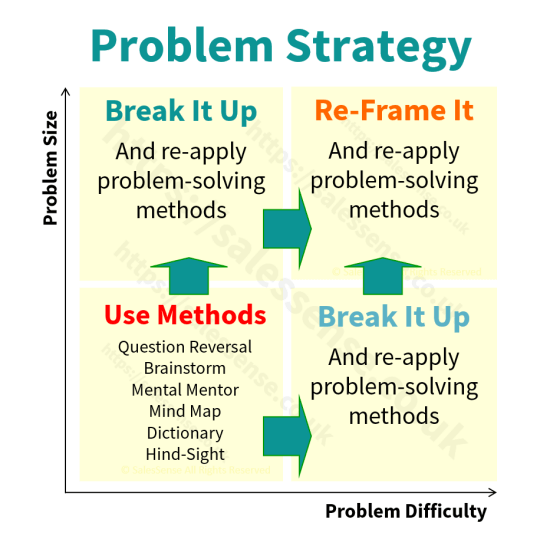
Planning must involve anticipating things that could go wrong and incorporating contingency plans for at least the most likely scenarios.
So for the potential obstacles and crises already listed, what could be done about them?
For each situation, brainstorm solutions. As you may know, brainstorming is an ideation process. If you are unfamiliar with the process, look it up. Once you have some ideas for dealing with each potential problem, decide which would be both effective and practical, then add them to your planning document.
Strategies and tactics.
Now you have generated strategies for dealing with a sales crisis, test each strategy or plan. For each intention ask, "Does this strategy make it obvious what I and others should do to make it happen?" If so, prepare a list of tactics for executing the strategy. If not, revise the approach until the necessary actions are obvious.
Keep Sales Performance Improvement Plans Current
Conduct plan reviews by convening a meeting with a small group of experts. This usually includes the sales manager and sales director. It might also include other sales experts from inside or outside the organisation. Review contingency plans as often as necessary but at least once a year.
Example Performace Improvement Plan for Sales
1. Analyse Past Performance
Gather sales data for the territory, account, or team looking back as far as is practical.
Calculate rolling averages (e.g., 3-month or 6-month) to smooth out anomalies and provide a clearer trend line.
Comparative Analysis: Create graphs to compare performance with other equivalent territories, accounts, or teams within the company and externally if the data is available.
Analyse the smoothed data to identify upward or downward trends.
Use the identified trends to forecast future performance, assuming current patterns continue.
2. Performance Gap Analysis
Using the extrapolated data, calculate the expected performance for the upcoming period.
Subtract this expected performance from the required sales target to determine the performance gap.
3. Strategy Development
Hold a meeting with the salespeople involved to discuss the performance gap. Facilitate a brainstorming session to develop strategies aimed at closing the gap.
4. Augmentation of Strategies
Evaluate the proposed strategies for feasibility and potential impact. Enhance the strategies with additional insights, resources, or best practices as necessary.
5. Key Performance Indicators (KPIs)
Work with those involved to identify leading key performance indicators that will provide an early indication of progress.
Establish specific, measurable targets for each KPI.
6. Progress Review Meetings
Schedule regular times or meetings (e.g., bi-weekly or monthly) to review progress against the KPIs. If you are doing this for yourself, recruit one or two colleagues or your manager to help with the reviews.
Act early to correct any divergence from the plan.
If the plan requires new skills or knowledge, include a section that details how the missing skills or knowledge will be acquired.
What happens in a performance crisis?
A performance crisis occurs when an individual, team, or organisation faces a significant drop in productivity, quality, or effectiveness. This drop often results in unmet expectations, missed deadlines, lower morale, and a negative impact on overall outcomes.
Performance crises can manifest in various settings, including corporate environments, sports teams, creative industries, or personal endeavours. Understanding the causes, dynamics, and consequences of a performance crisis is essential to addressing it effectively.
Identifying the Signs of a Performance Crisis
The first step in navigating a performance crisis is identifying its signs. While the specifics vary depending on the context, certain indicators are universal. A sharp decline in output, increased error rates, and an inability to meet previously established benchmarks are all red flags. Other indicators include poor communication, disorganisation, burnout, and disengagement among team members. Managers might also notice increased absenteeism, conflicts within the team, or a shift in team dynamics.
In creative or intellectual fields, a performance crisis might appear as “writer’s block,” a sudden lack of innovative ideas, or an inability to concentrate. For businesses, it could show up as a drop in sales, lower customer satisfaction scores, or increased operational inefficiencies. The common thread is that a performance crisis disrupts the normal functioning of individuals or groups and creates a state of anxiety and uncertainty.
Root Causes of a Performance Crisis
Pinpointing the cause of a performance crisis is often challenging because it involves multiple interconnected factors. Some of the primary contributors are:
Excessive Workload and Burnout: When individuals or teams are overloaded, stress levels increase, leading to diminished performance. The brain becomes less efficient at problem-solving, creativity suffers, and the likelihood of mistakes rises. Chronic stress can result in burnout, where individuals become disengaged, detached, and unable to function at their previous capacity.
Poor Communication and Misalignment: Ineffective communication is a leading cause of performance crises. If expectations are unclear, goals are not well-defined, or feedback is sparse, individuals struggle to perform at their best. Misalignment between departments or teams exacerbates this, creating a scenario where efforts are duplicated or crucial tasks fall through the cracks.
Lack of Resources or Support: Inadequate resources, whether in terms of time, technology, personnel, or training, make it difficult for teams to achieve their objectives. When people feel unsupported, they may become frustrated and lose motivation.
Leadership Failures: Poor leadership can cause a performance crisis. If leaders do not set a clear vision, fail to motivate their teams, or lack the skills to navigate challenges, a crisis can quickly escalate. Micromanagement, indecisiveness, or inconsistent guidance undermine team confidence and create confusion.
Change Fatigue and Resistance: Organisations undergoing rapid changes in structure, strategy, or technology may experience a performance crisis due to change fatigue. Employees overwhelmed by constant shifts often become resistant or disengaged. This resistance hampers implementation and disrupts performance.
Psychological Factors: Personal issues, low self-esteem, or lack of confidence can trigger a performance crisis. When individuals feel overwhelmed or fear failure, it can create a self-fulfilling prophecy where anxiety leads to underperformance.
The Stages of a Performance Crisis
Onset: A performance crisis typically starts with subtle shifts in behaviour or results. There may be an increase in minor errors, slight delays, or a general sense of unease. Individuals may not yet recognise the severity of the issue, attributing it to temporary factors like a busy period or minor disruptions.
Escalation: If the initial signs are not addressed, the crisis begins to escalate. Deadlines are missed more frequently, quality standards drop, and frustration levels rise. Communication starts to break down as people become defensive or disengaged. This stage often involves blame-shifting and a noticeable decline in morale.
Crisis Point: This is the critical phase where performance has deteriorated significantly, and the impact is undeniable. There may be public failures, such as lost clients, poor product launches, or visible mistakes in execution. At this stage, panic and anxiety are prevalent, and the organisation or individual may feel trapped or overwhelmed.
Recovery or Collapse: The final stage depends on the response to the crisis. With appropriate intervention, performance can stabilise and eventually improve. This requires acknowledging the problem, diagnosing the root causes, and implementing a targeted recovery strategy. Without intervention, however, the crisis can lead to collapse, characterised by long-term damage to reputation, loss of key personnel, or even the dissolution of the team or business.
Impact of a Performance Crisis
The fallout from a performance crisis is multifaceted and extends beyond immediate productivity losses. Key impacts include:
Reduced Employee Morale: A performance crisis can severely damage morale, leading to apathy, resentment, or a culture of blame. People may feel disillusioned, undervalued, or fearful for their job security.
Damage to Reputation: In business settings, a performance crisis can harm the organisation’s reputation with clients, customers, and partners. Negative perceptions may linger, affecting future business prospects.
Financial Losses: For companies, performance crises often translate into tangible financial losses due to missed opportunities, project delays, or additional costs incurred in damage control.
Increased Staff Turnover: High-performing employees may choose to leave during a crisis, seeking a more stable environment. This can result in a loss of institutional knowledge and further exacerbate the crisis.
Psychological Impact: On an individual level, performance crises can lead to stress, anxiety, and a loss of self-confidence. Prolonged exposure can result in burnout or even more severe mental health challenges.
The Value of a Pre-Prepared Performance Improvement Plan
Addressing a performance crisis requires a thoughtful and systematic approach. Key strategies include:
Acknowledging the Issue: The first step is to openly acknowledge the crisis. This involves creating a safe space for people to voice their concerns and frustrations without fear of reprisal. Leaders should listen actively and validate the challenges being experienced.
Diagnosing the Problem: Conduct a thorough analysis to identify the root causes of the crisis. This may involve reviewing workflows, conducting surveys or interviews, and looking at both qualitative and quantitative data. Understanding whether the issue is due to a lack of resources, miscommunication, or leadership gaps is crucial for effective intervention.
Implementing Targeted Interventions: Once the root cause is identified, specific interventions should be implemented. If communication is the issue, consider establishing more structured feedback channels. If burnout is the cause, redistribute workloads or offer more flexibility. Leadership gaps might require training or restructuring.
Rebuilding Trust and Morale: Addressing a performance crisis often involves repairing damaged trust. Transparent communication, recognition of effort, and consistent follow-through on commitments are vital. Celebrating small wins can help rebuild confidence and morale.
Monitoring and Adjusting: Recovery from a performance crisis is an ongoing process. Regular check-ins, feedback loops, and performance assessments are necessary to ensure that the interventions are working. If not, adjustments should be made swiftly.
Having a pre-prepared performance improvement plan can shorten the recovery time by weeks or months. While a pre-prepared plan may not anticipate all eventualities, having a plan that can be quickly adapted makes a world of difference.
Preventing Future Crises
While it’s not always possible to prevent performance crises, organisations and individuals can take proactive steps to minimise their likelihood. Building a culture of open communication, fostering resilience, creating a contingency performance improvement plan and maintaining realistic workloads are all critical.
Regularly reviewing goals, plans, and threats and investing in leadership development help create an environment where performance crises occur less frequently.
Do you need to develop a recovery or performance improvement plan?
If you have a sales goal or target you should invest some time in planning how to achieve it. If you manage a sales team and team members don't maintain credible sales target achievement plans that include improvement contingencies, have them create plans. Review each plan monthly or at least once a quarter. These actions are certain to increase individual and team sales performance.
Sales Enablement: Do you have a sales enablement team that could do the work to make this happen? If not, consider outsourcing sales enablement projects to us. Alternatively, hire us as your part-time sales enablement team. Learn More
Arrange training: Have us lead a training session in a virtual classroom. Participants receive a plan template for creating and maintaining their performance improvement plan. Learn More
Have us facilitate plan reviews: Facing a plan review can be daunting. It is uncomfortable to hear criticism. Professional facilitation makes the process much more productive. Learn More
Schedule a call for an informal conversation.
DIY Resources
Request a free copy of our sales performance improvement plan template with this link.
The Truth about Plans and the Remarkable Value of Planning
Test any Plan with this Free Assessment
Eight Practical Actions to Quickly Fix a Sales Crisis
If you need a sales performance improvement plan (sales PIP), take a shortcut. Schedule a consultation or call +44 (0)1392 851500. Alternatively, use the contact form here or send an email to jimm@salessense.co.uk.




